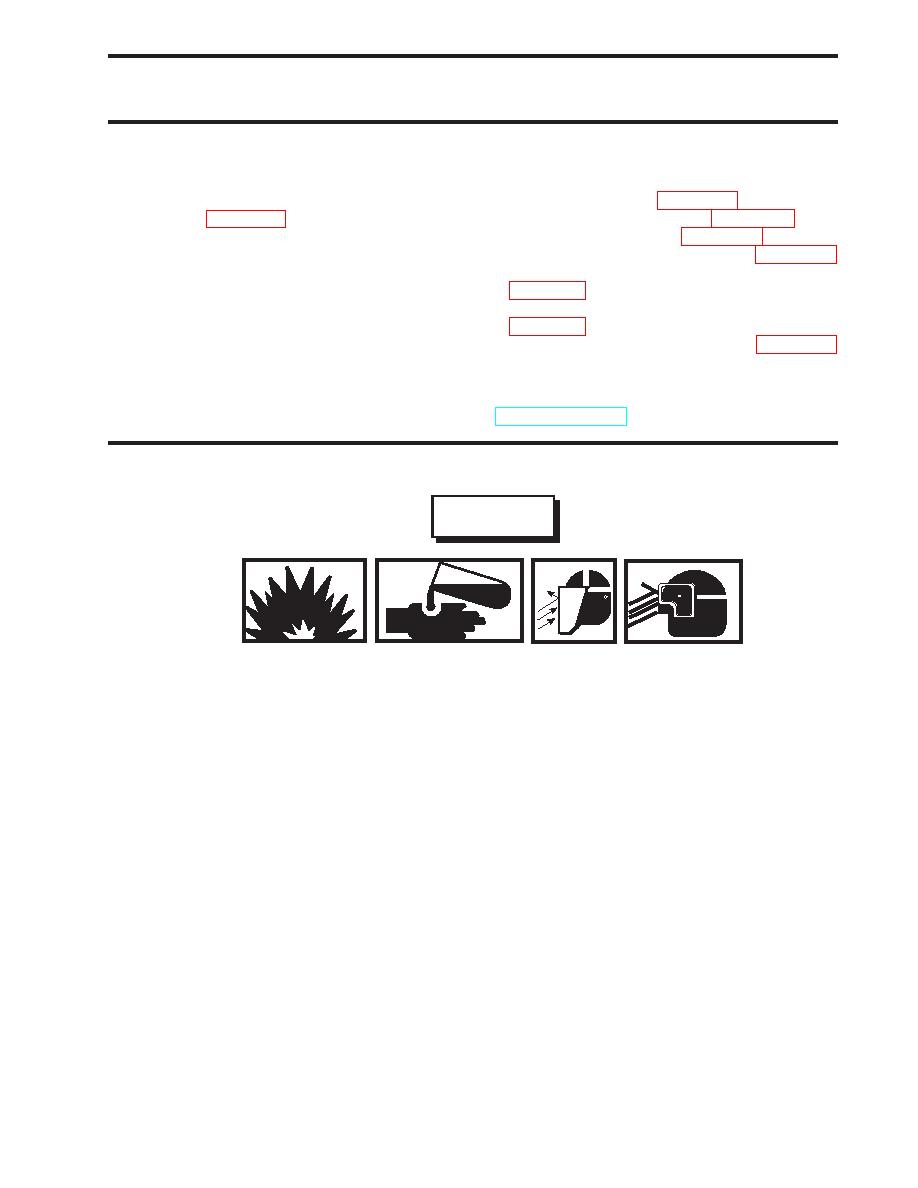
| Tweet |

Custom Search
|
|

|
||
 TM 55-1905-242-14
OPERATOR MAINTENANCE
FOR LANDING CRAFT, MECHANIZED (LCM-8) (ALL VESSELS WITH MOD 2 APPLICATION)
BATTERIES AND CABLES, SERVICE
INITIAL SETUP:
Materials/Parts:
Tools and Special Tools:
Petrolatum (Item 7, Table 2, WP 0230 00)
Tool Kit, Mechanic's Rail and Marine (Item 1,
Sodium Bicarbonate (Item 8, Table 2, WP 0230 00)
Table 1, WP 0230 00)
Distilled Water (Item 9, Table 2, WP 0230 00)
Equipment Condition:
Gloves, Chemical Protective (Item 3, Table 2, WP 0230 00)
Goggles, Industrial, No Vents (Item 4, Table 2,
Propulsion engines secured, locked out, and
tagged out IAW FM 55-502
Face Shield, Industrial, Tilting (Item 10, Table 2,
Battery isolation switches set to OFF, locked out,
and tagged out IAW FM 55-502
Apron, Chemical Protection (Item 11, Table 2, WP 0230 00)
Personnel Required:
References:
One Watercraft Engineer, 88L
FM 55-502
TM 55-1905-242-24P (WP 0027)
SERVICE
WARNING
Batteries produce hydrogen gas. This gas is explosive. Keep the work area free of
sparks, open flame, and excessive heat. Take care to prevent conductive metal tools
from arcing between the positive and negative terminals. Failure to comply with these
precautions can result in serious injury or death.
Batteries are filled with a sulfuric acid-based electrolyte. This electrolyte is extremely
corrosive to human tissue and to many other materials. Chemical protective gloves,
chemical protective goggles, face shield, and chemical protective apron must be worn at
all times when the batteries are being serviced. If electrolyte comes in contact with
clothing or other material, wash the affected area with large volumes of fresh water. If
electrolyte comes in contact with the skin, flush the area with large volumes of water. If
the electrolyte comes in contact with the eyes, flush them with large volumes of water.
Continue flushing the affected area until medical assistance arrives. Failure to comply
can result in serious injury or death.
NOTE
Whenever working with batteries, the negative cable must be disconnected first, the
positive cable next, and the interconnecting cable (if installed) last. When connecting
the batteries, the interconnecting cable (if installed) must be connected first, the posi-
tive cable next, and the negative cable last.
0059 00-1
|
||
 |
||